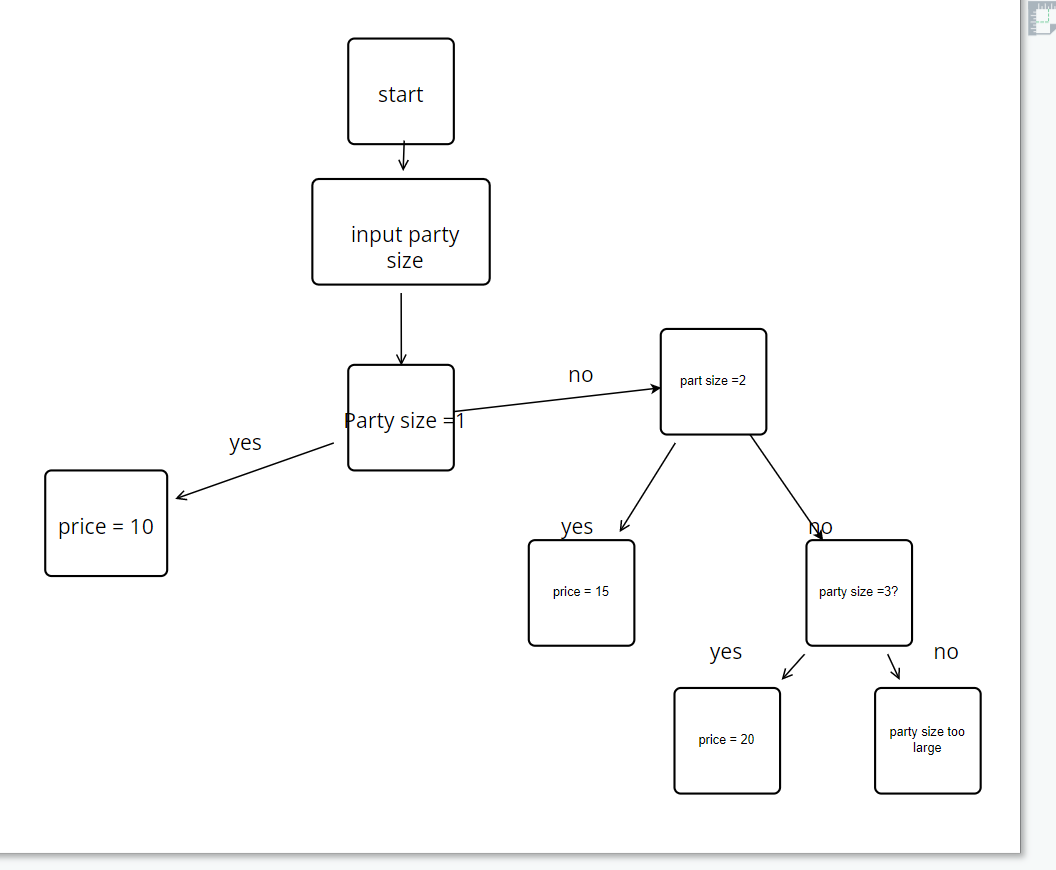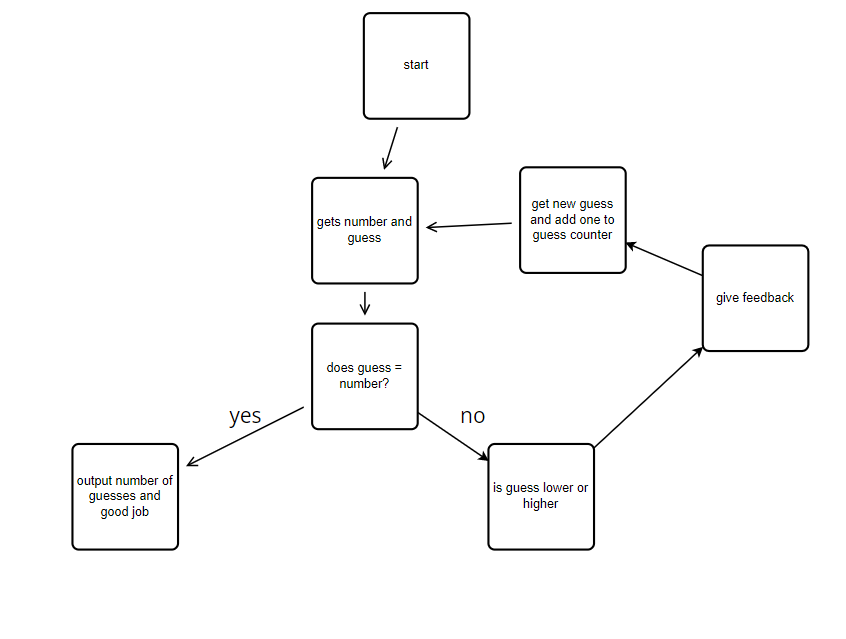why is it important to know that algorithms that look different can do the same thing and that algorithms that look the same might have different results?(0.15)
- It is important to know that algorithms that look different can do the same thing so that when working with others and people have various codes it is important to open your mind to understand the code rather than rejecting it because it looks differet. It is also important to know that even code that looks similar can have different purposes so we dont jump to conclusions when evaluating code for the converted conditional to boolean conversion(0.10) total: 0.25
sun = False
raincloud = True
if sun == True:
print("it is sunny")
else:
if raincloud == True:
print("it is cold and rainy")
else:
print("not rainy or hot")
sun = False
raincloud = True
sunny = not(raincloud) and sun
if sunny == True:
print("it is sunny")
if sunny ==False:
print("it is not sunny")
partysize = 4
if partysize ==1:
print("cost is 10")
elif partysize ==2:
print("cost is 15")
elif partysize ==3:
print("cost is 20")
elif partysize ==4:
print("cost is 25")
import random
#sets variables for the game
num_guesses = 0
user_guess = 0
upper_bound = 100
lower_bound = 0
#generates a random number
number = random.randint(1,100)
# print(number) #for testing purposes
print(f"I'm thinking of a number between 1 and 100.")
#Write a function that gets a guess from the user using input()
def guess():
out = input("What number?")
return out
#Change the print statements to give feedback on whether the player guessed too high or too low
def search(number, guess):
global lower_bound, upper_bound
if int(guess) < int(number):
print("below the actual") #change this
lower_bound = guess
elif int(guess) > int(number):
print("above the actual") #change this
upper_bound = guess
elif int(guess) == int(number):
upper_bound = guess
return lower_bound, upper_bound
while user_guess != number:
user_guess = guess()
num_guesses += 1
print(f"You guessed {user_guess}.")
lower_bound, upper_bound = search(number, user_guess)
if int(upper_bound) == int(number):
break
else: print(f"Guess a number between {lower_bound} and {upper_bound}.")
print(f"You guessed the number in {num_guesses} guesses!")
Hacks: calculate the middle index and create a binary tree for each of these lists 12, 14, 43, 57, 79, 80, 99 92, 43, 74, 66, 30, 12, 1 7, 13, 96, 111, 33, 84, 60

One = [12,14,44,57,79,80,99]
Two = [92,43,74,66,30,12,1]
Three = [7,13,96,111,33,84,60]
Lists = [One, Two, Three]
# loops through the range of the length of lists
for x in range(len(Lists)):
#sorts the list in order
Lists[x].sort()
#takes the middle index
middleindex = int(len(Lists[x])/2)
#outputs
print("Middle Index of List #",x+1,"is",Lists[x][middleindex])
Using one of the sets of numbers from the question above, what would be the second number looked at in a binary search if the number is more than the middle number? Set 1: 80, Set 2: 74, Set 3: 96
Which of the following lists can NOT a binary search be used in order to find a targeted value?
a. ["amy", "beverly", "christian", "devin"]
b. [-1, 2, 6, 9, 19]
c. [3, 2, 8, 12, 99]
d. ["xylophone", "snowman", "snake", "doorbell", "author"]
c is out of orderso therefore it is c

